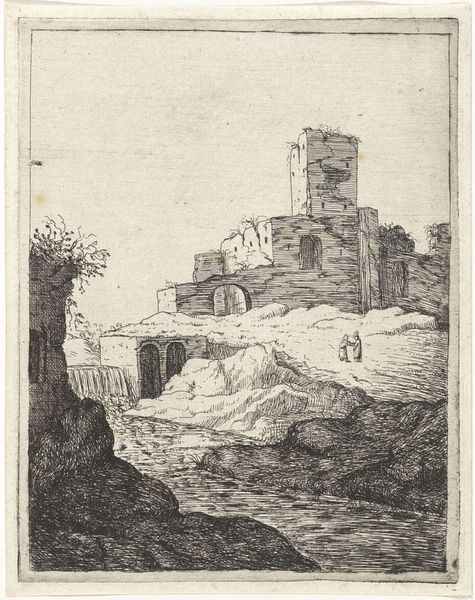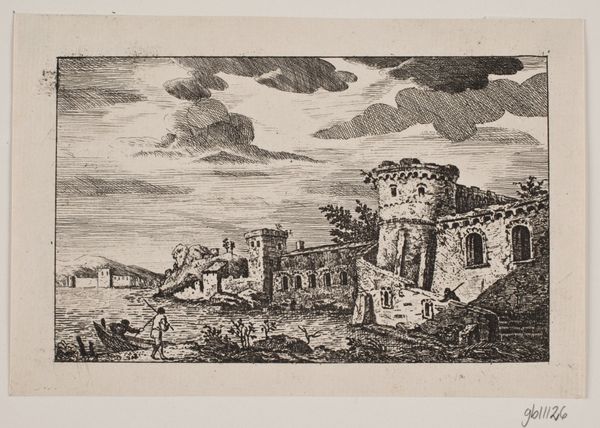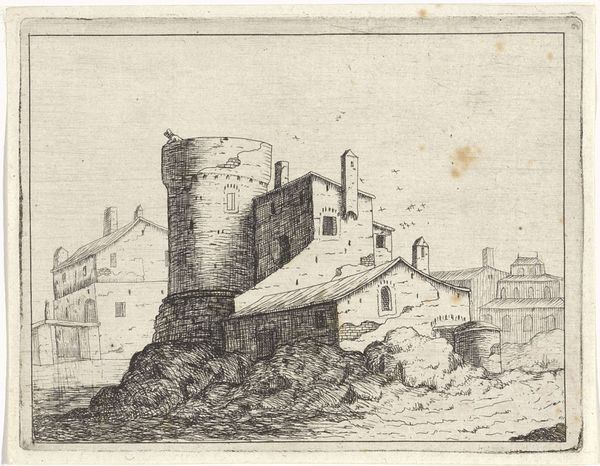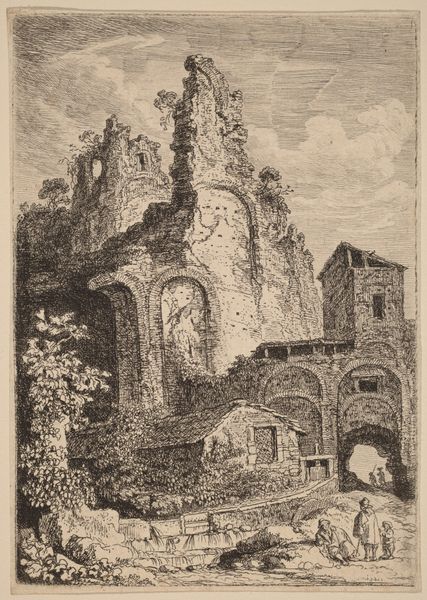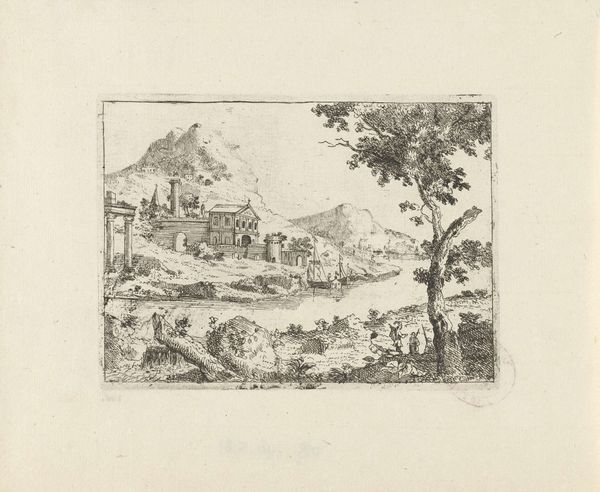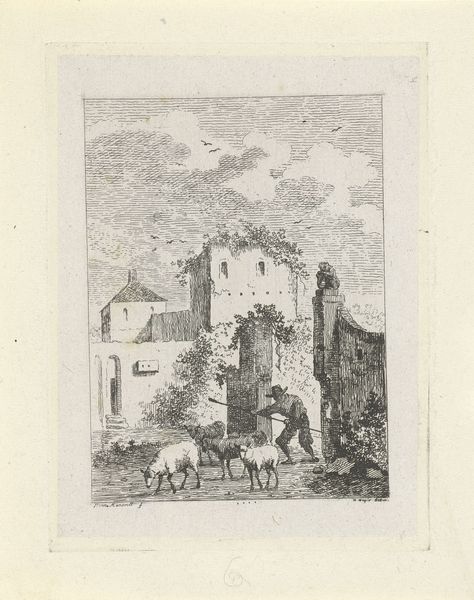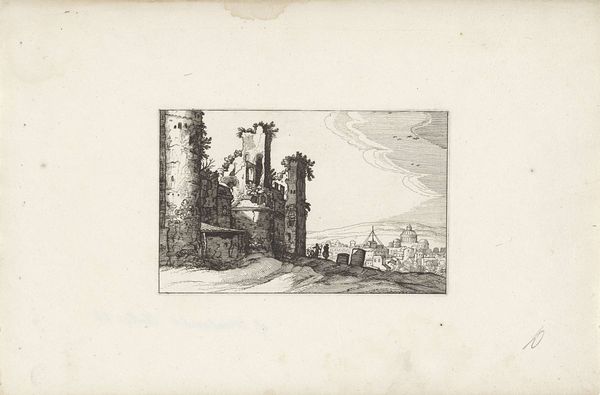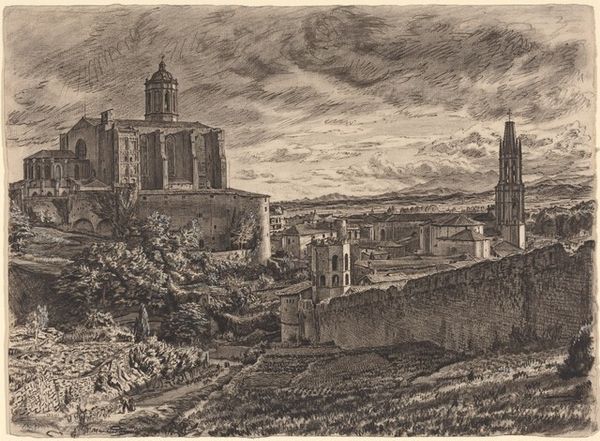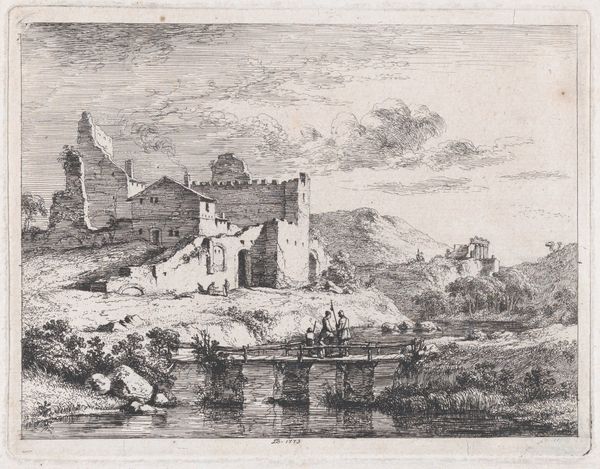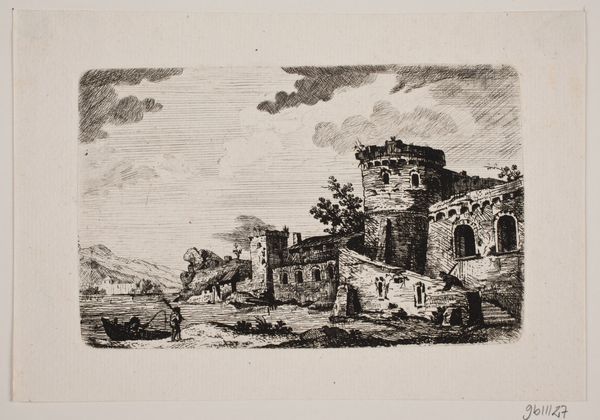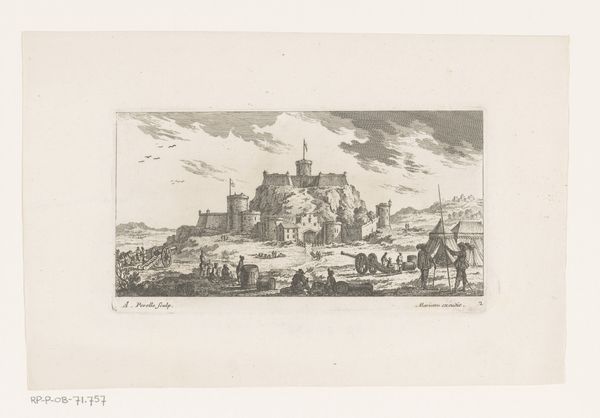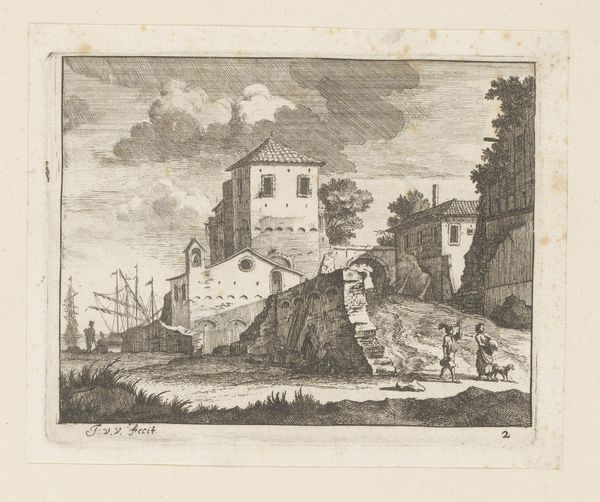
drawing, print, engraving
#
drawing
#
neoclacissism
# print
#
pen sketch
#
pencil sketch
#
landscape
#
engraving
Dimensions: height 198 mm, width 150 mm
Copyright: Rijks Museum: Open Domain
Editor: Here we have "Muur en een brug" or "Wall and a Bridge" by Gerard van Nijmegen, created around 1790. It’s a print, an engraving, and a drawing, currently held at the Rijksmuseum. It has such a stark, almost melancholy feel to it. I am particularly struck by the lines composing the stones; the architecture is very striking. How do you interpret this work? Curator: The composition immediately strikes me as a study in contrasts. Notice the stark horizontality of the wall itself versus the intricate detail in the surrounding foliage. Van Nijmegen has presented us with very considered and structured space, sharply offset by less organised space, if you will. Look at the mark-making itself: where does the line become denser and more deliberate? Editor: I see that near the base of the wall and the leaves, it's definitely denser there. It gives a sense of weight. Curator: Precisely. It anchors the composition. Now, consider the void: the blank space of the sky, and the less focused, light, and soft mark making that make up this plane. This emptiness serves to highlight the tangibility, the sheer material presence of the wall. It's almost sculptural, wouldn't you agree? Editor: That's true! The architectural forms feel very solid. I guess I hadn’t really considered the negative space. Curator: Often the most compelling aspects reside not only in what is represented but how those things are placed and executed in relation to other parts. The artist's hand, their choices, their marks - that's where the work truly exists. Editor: It’s amazing how much you can learn about a piece simply by looking closely at the lines and shapes! Curator: Indeed. It is through this careful and sustained looking that the dialogue with the artwork begins.
Comments
No comments
Be the first to comment and join the conversation on the ultimate creative platform.
